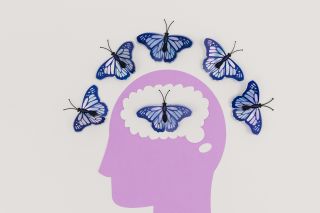Autism
Do Autism or ADHD Have a Neural Signature?
Alterations in neural connections as potential biomarkers of neurodivergence.
Posted February 5, 2024 Reviewed by Davia Sills
Key points
- The default mode network refers to the pattern of activity and connectivity in the brain when at rest.
- Differences in default mode network connectivity have been identified in autism.
- In addition, certain similarities have been found between the default mode and the salience mode in autism.
- These alterations may have clinical and educational implications.

The brain holds mysteries about ourselves, how we relate to others and the world, and perhaps even what it means to view reality through one's eyes. While discoveries about the brain have raced within the last several decades, much remains unknown, earning neurology the title of "the final frontier."
As a psychotherapist with very little training in neuroscience, I recognize the limitations of my grasp of these constructs. Yet, some nuggets hold vast implications for therapists and clients. Among these are patterns of brain connectivity and how different regions of the brain interact during any given task. More specifically, the default mode network.
The default mode network refers to a pattern of connection and activity between brain regions during states of rest. It's where our mind goes when we daydream or otherwise are at rest. While there are brain regions that show up as the "usual characters" in the default mode network, there is variance between individuals. Some have suggested that this network may be responsible, in part, for our sense of self and how we relate to others (Davey and Harrison, 2016).
Brain Network Connectivity and Autism
Research into default mode networks has been of particular interest in topics related to neurodiversity. A meta-analysis of 10 studies investigating mode network functional connectivity among autistic individuals found several alterations when compared to neurotypical controls. Hyperconnectivity appeared in several brain regions, including the cerebellum, right middle temporal gyrus, superior occipital gyrus, right supramarginal gyrus, and supplementary motor area. In addition, diminished connectivity was spotted in a few areas, including the medial prefrontal cortex, precuneus, and angular gyrus.
While the significance of this is still a subject of inquiry, these changes could represent variations in one's integration of information, even while at rest. These alterations may suggest a biomarker for autism and a different way of experiencing the world.
Of interest, another network of connectivity, the salience network, connectivity associated with processing reward and meaning, has been suggested through brain imaging studies to have more similarity to the default mode network in autistic individuals than in neurotypical controls (Chen et al., 2022). Of note, in this study, the particular similarity identified an increased coupling between the medial prefrontal cortex and insula during tasks measuring the salience network, which were correlated with reduced social responsiveness.
The total meaning of this remains speculative. Still, one may wonder if this differentiation may, in part, signal the tendency in autism toward bottom-up processing, making information as a whole more salient in a sense and reducing the filter on this information in ways lining up with concepts of the "intense world theory" of autism.
Default Mode Network and ADHD
Alterations within the default mode network have also been identified in ADHD. A study of inter-network connectivity using fMRI technology with children diagnosed with ADHD and neurotypical peers found an increased connection between regions associated with cognitive control and ones associated with movement within the default mode network (Duffy et al., 2021). The strength of this hyperconnectivity correlated with increased errors on a task of impulsivity.
Although implications are difficult to draw, many ADHDers will empathize with the need to move, particularly while trying to focus.
What Does This Mean for Clinicians and Clients
Through my eyes as a neurodivergent person, I have found this research validating. To me, it symbolizes markers of what might be a different way of experiencing the world. Psychoeducation on this exploration could be affirming and enlightening to neurodivergent people and those who love them.
In addition, as psychotherapists, we can learn from these findings, allowing us insight into the neurodivergent experience. This could have indications in crafting neurodiversity-affirming interventions and adaptive education practices for neurodivergent people.
References
Chen, Y. Y., Uljarevic, M., Neal, J., Greening, S., Yim, H., & Lee, T. H. (2022). Excessive functional coupling with less variability between salience and default mode networks in autism spectrum disorder. Biological Psychiatry: Cognitive Neuroscience and Neuroimaging, 7(9), 876-884.
Davey, C. G., Pujol, J., & Harrison, B. J. (2016). Mapping the self in the brain's default mode network. NeuroImage, 132, 390-397.
Duffy, K. A., Rosch, K. S., Nebel, M. B., Seymour, K. E., Lindquist, M. A., Pekar, J. J., & Cohen, J. R. (2021). Increased integration between default mode and task-relevant networks in children with ADHD is associated with impaired response control. Developmental Cognitive Neuroscience, 50, 100980.


